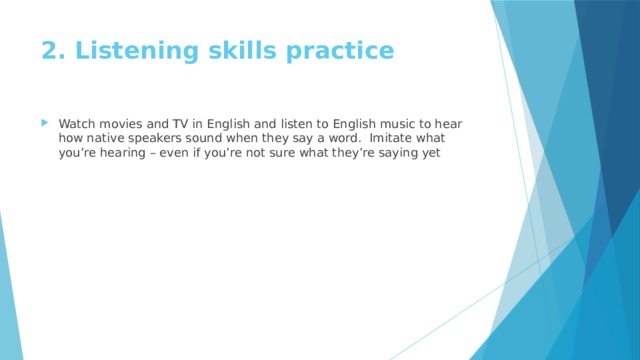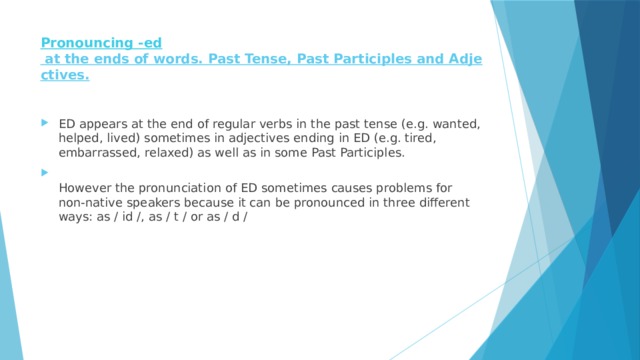1. First, you need to decide what accent you want to have
A Canadian accent is often considered the most neutral.
2. Listening skills practice
Watch movies and TV in English and listen to English music to hear how native speakers sound when they say a word. Imitate what you’re hearing – even if you’re not sure what they’re saying yet.
3. Listen to yourself
Try recording your speech with your smartphone or PC and making a note of specific areas you need to improve on
4. Speak slowly and clearly
Speaking too fast reinforces bad habits and makes the speaker sound nervous and indecisive.
5. When listening to native speakers, focus on how those speakers stress certain words and begin to copy this.
6. Practice in the mirror.
This is by far the simplest way to tell what your mouth is doing while you talk.
7. Ask for feedback from a teacher or native speaker.
A native speaker will let you know immediately what words you are pronouncing wrong and how to correct them.
8. Relax and be natural
Sometimes you can actually try too hard to pronounce every syllable and sound perfectly.
9. Practice English alone
Pronunciation problems persist because we’re afraid to make mistakes.
10. Practice for at least 30 minutes every day.









































